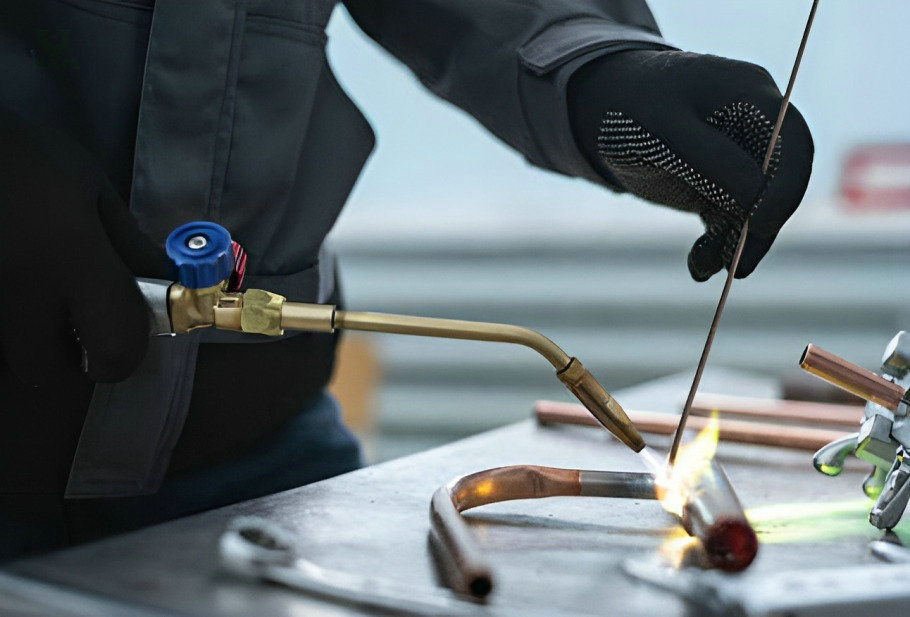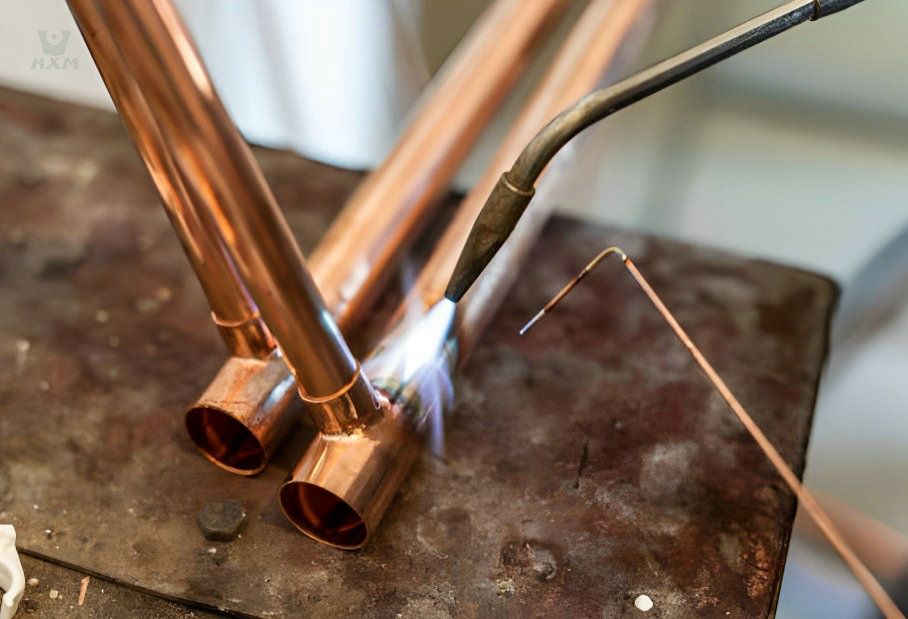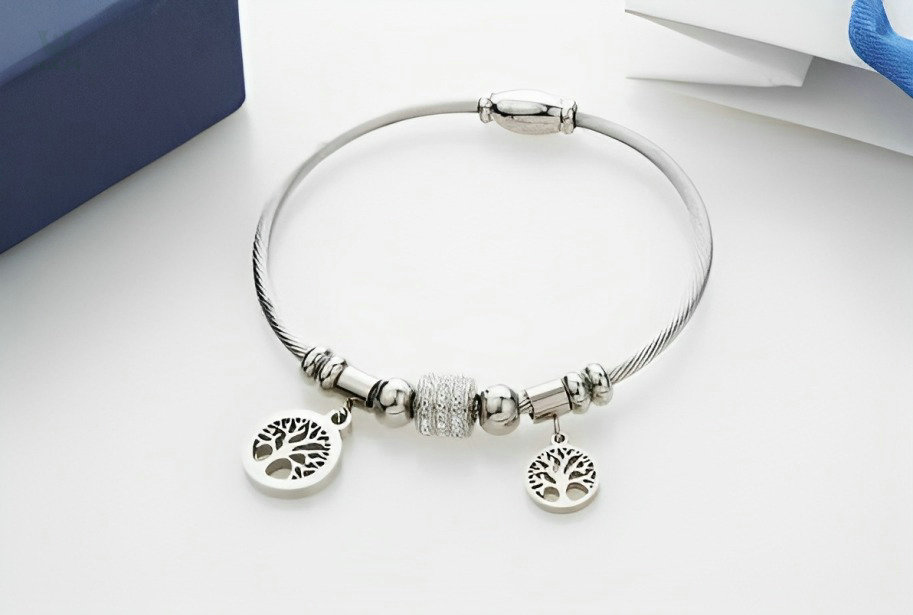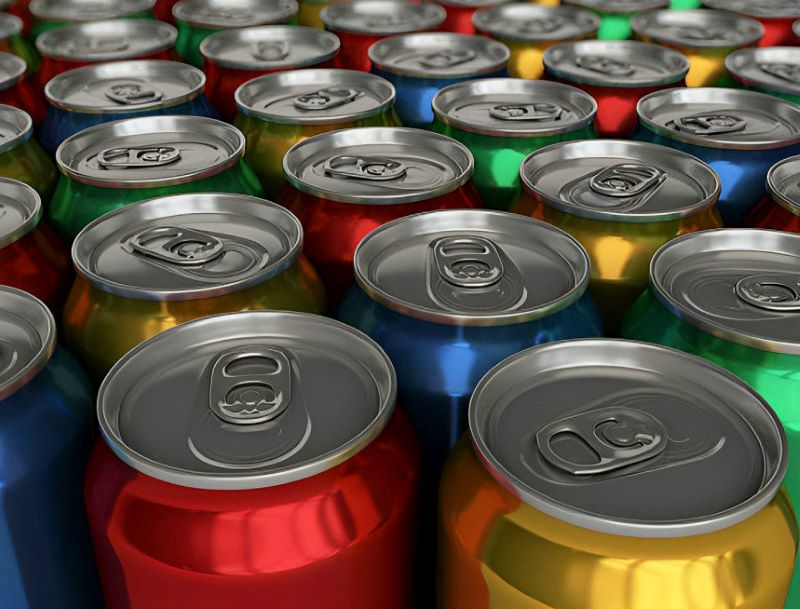In the world of metals, copper stands as one of the most versatile and crucial elements, finding its place in various applications, from electrical wiring to plumbing and artistic creations. However, working with copper is not always as straightforward as it seems. When it comes to joining pieces of this brilliant metal together, one might wonder: How can you effectively weld copper?
how to weld copper?
Weld copper is a specialized process that demands careful attention to detail. The task involves creating a strong, enduring bond between two copper pieces. Here’s a scientific overview of how to weld copper effectively:
Preparation: Remove any oxides, dirt, or contaminants from the copper using a wire brush or a chemical cleaner. This step is crucial, as copper oxides can hinder the welding process.
Choose the Right Welding Method: There are several methods for weld copper, with the most common being TIG (Tungsten Inert Gas) welding.
Safety Gear: Safety first. Ensure you’re wearing appropriate protective gear, including a welding helmet, gloves, and a welding jacket.
Heat Control: Use low heat settings and control the heat input to avoid overheating, which can lead to warping or damage.
Filler Material: Copper filler rods are typically used to strengthen the weld and ensure a solid joint.
Welding Technique: The key to weld copper is maintaining a consistent, steady hand and precise control of the welding torch. The filler material should melt and fuse with the base metals smoothly.
Post-Welding Cleaning: After welding, allow the copper to cool naturally. Then, clean the welded area again to remove any remaining oxides or impurities.
Inspection: Inspect the weld to ensure it’s structurally sound. Look for any cracks, voids, or imperfections. If necessary, rework the weld.
By following these scientific steps, you can weld copper successfully. However, weld copper is a skill that improves with practice, so don’t be discouraged if your initial attempts aren’t perfect. With dedication and continued learning, you can master the art of welding this remarkable metal.
In this blog, we will delve into the various welding methods and techniques used to overcome these challenges when working with copper. From TIG welding to alternative methods and specialized welding techniques, we’ll explore the processes, precautions, and post-welding procedures that can help you master the art of welding copper effectively and reliably.

Preparing to Weld Copper
Preparing to weld copper is a crucial step that lays the foundation for a successful welding process. This involves cleaning and surface preparation to ensure a clean, oxide-free welding surface. Additionally, it’s imperative to take the necessary safety precautions and gather the required equipment for a safe and effective welding operation. In this section, we will dive into the specifics of how to prepare copper surfaces, the significance of cleanliness, and the safety measures and equipment necessary for a successful copper welding project.
Cleaning and surface preparation
Cleaning and surface preparation are essential aspects of preparing copper for welding, and they involve several scientific principles:
- Contaminant Removal: Prior to welding, the copper surface must be completely free of contaminants. This includes dirt, oil, grease, and oxides. Oxides, in particular, are detrimental as they can interfere with the welding process. Surface contamination removal is achieved through techniques such as solvent cleaning, abrasive cleaning, or even chemical cleaning. Solvent cleaning involves the use of organic solvents to remove oils and grease, while abrasive cleaning employs tools like wire brushes or abrasives to physically remove surface contamination.
- Oxide Removal: Copper naturally forms oxides on its surface when exposed to air. These oxides must be removed for successful welding. The removal process often involves pickling, which uses a mild acid solution to dissolve the oxides. This leaves a clean, oxide-free surface that's essential for proper fusion during welding.
- Mechanical Cleaning: After pickling, mechanical cleaning methods such as wire brushing or grinding may be employed to further prepare the surface. These methods ensure that the metal is clean and ready for welding.
- Safety Measures: Safety is a paramount concern in cleaning and surface preparation. The chemicals and tools used in the process should be handled with care. Proper ventilation, personal protective equipment (PPE), and adherence to safety protocols are crucial for safeguarding the health of the welder.
Understanding these scientific principles of cleaning and surface preparation is key to achieving strong and durable copper welds.
Safety precautions and equipment
Welding copper involves various safety precautions and specialized equipment due to the potentially hazardous nature of the process.
Safety Precautions
- Contaminant Removal: Prior to welding, the copper surface must be completely free of contaminants. This includes dirt, oil, grease, and oxides. Oxides, in particular, are detrimental as they can interfere with the welding process. Surface contamination removal is achieved through techniques such as solvent cleaning, abrasive cleaning, or even chemical cleaning. Solvent cleaning involves the use of organic solvents to remove oils and grease, while abrasive cleaning employs tools like wire brushes or abrasives to physically remove surface contamination.
- Oxide Removal: Copper naturally forms oxides on its surface when exposed to air. These oxides must be removed for successful welding. The removal process often involves pickling, which uses a mild acid solution to dissolve the oxides. This leaves a clean, oxide-free surface that's essential for proper fusion during welding.
- Mechanical Cleaning: After pickling, mechanical cleaning methods such as wire brushing or grinding may be employed to further prepare the surface. These methods ensure that the metal is clean and ready for welding.
- Safety Measures: Safety is a paramount concern in cleaning and surface preparation. The chemicals and tools used in the process should be handled with care. Proper ventilation, personal protective equipment (PPE), and adherence to safety protocols are crucial for safeguarding the health of the welder.
Equipment
- Welding Machine: Choosing the right welding machine is crucial. TIG (Tungsten Inert Gas) and MIG (Metal Inert Gas) welding machines are common choices for welding copper. These machines control the flow of electricity and the delivery of shielding gas to ensure precise and controlled welds.
- Copper Alloys and Filler Materials: The selection of the correct filler material and copper alloy is essential for successful welding. These materials are chosen based on the type of copper being welded and the specific application.
- Shielding Gas: Inert gases like argon or helium are used to protect the weld zone from atmospheric contamination. This shielding gas ensures a clean and strong weld.
- Safety Gear: In addition to the welding helmet and gloves, welders should use flame-resistant jackets and pants, leather boots, and a proper welding apron.
Understanding and adhering to these safety precautions and using the right equipment is crucial for a successful and safe copper welding process. It protects the welder from harm and ensures the quality and integrity of the welds. Copper alloy suppliers often provide guidance on materials and safety measures specific to their products.
Welding Methods for Copper
When it comes to welding copper, there are several methods available, each with its own set of advantages and considerations. In this section, we will explore various welding methods for copper, starting with the widely used TIG welding (Tungsten Inert Gas), and then looking into alternatives like MIG welding and oxyacetylene welding. Understanding these methods will help you choose the most suitable one for your specific copper welding needs.
TIG Welding (Tungsten Inert Gas)
TIG welding, or Tungsten Inert Gas welding, is a popular method for welding copper due to its precision and control. This method uses a non-consumable tungsten electrode to create the arc, and a separate filler rod is added to the weld puddle. Here’s how it works:
- Electrode and Shielding Gas: TIG welding employs a tungsten electrode that doesn't melt during the welding process. It generates an arc, and to protect the molten copper from oxidation, an inert shielding gas, typically argon, is used. This gas maintains a stable environment around the weld.
- Filler Rod: A separate filler rod, made of copper or a copper alloy, is manually fed into the weld pool. This adds material to the joint, enhancing its strength and integrity.
- Precision and Cleanliness:TIG welding offers excellent control over the heat input, making it suitable for thinner copper materials. It produces clean and high-quality welds, which is essential for applications where appearance and integrity are crucial.
TIG welding is commonly used for joining pieces of copper that are relatively thin, such as tubing, pipes, and delicate copper components. Its precision and minimal heat-affected zone make it a preferred choice for high-quality copper welding.
*Note: Copper alloy suppliers often provide specific filler rods tailored for various copper alloy compositions, ensuring compatibility with the base material.
MIG Welding (Metal Inert Gas)
MIG welding, or Metal Inert Gas welding, is another method used for welding copper. It offers some unique advantages:
- Shielding Gas: In MIG welding, a continuous wire electrode is fed through a welding gun. This wire acts as the filler material. Simultaneously, a shielding gas, typically argon, is used to protect the weld pool from atmospheric contaminants.
- Faster Welding: MIG welding is relatively faster than TIG welding and is more suitable for thicker copper sections due to its higher heat input. It's also more forgiving in terms of joint fit-up, which can be advantageous for certain applications.
- Simplified Process: MIG welding is easier to learn and set up compared to TIG welding. This makes it a preferred choice for those new to welding or working on less intricate projects.
Oxyacetylene Welding
Oxyacetylene welding, also known as gas welding, is another method for copper welding. It involves the combustion of acetylene gas and oxygen to produce a high-temperature flame. This flame is used to melt the copper, and a filler rod is added as necessary.
- High Heat: Oxyacetylene welding generates extremely high temperatures, making it suitable for copper, which requires significant heat to reach its melting point.
- Portability: Oxyacetylene welding equipment is relatively portable and can be used in various locations. This makes it useful for field repairs and applications where mobility is essential.
However, oxyacetylene welding requires more skill and precision to achieve high-quality welds compared to other methods. Moreover, the heat-affected zone is typically larger, which can be a concern for certain copper applications.
When choosing a welding method for copper, it’s important to consider the specific requirements of your project, the thickness of the copper, and your level of expertise. Copper alloy suppliers can provide the necessary filler materials and guidance for the most suitable welding technique for your needs.

Welding Techniques
Welding copper is an art that demands meticulous control of heat, an in-depth comprehension of copper’s exceptional thermal conductivity, and a skillful use of filler materials. In this section, we will explore these essential aspects of copper welding, providing you with the knowledge and techniques needed to master the craft.
Controlling heat and managing conductivity
Controlling heat and effectively managing conductivity are pivotal when welding copper. Copper’s exceptional thermal conductivity requires a precise balance between heat input and dissipation. Without adequate control, the workpiece can become excessively hot, resulting in distortion or burn-through.
To address this, TIG welding, known for its fine heat control, is frequently employed when welding copper. The welder carefully adjusts the amperage, ensuring a heat level that is sufficient for the weld but doesn’t overheat the base metal. It’s crucial to maintain a consistent arc length and travel speed to manage heat effectively.
Furthermore, the choice of filler material plays a vital role. A copper filler rod with a similar composition to the base metal is often used. These rods, which can be obtained from a reputable copper alloy supplier, help maintain conductivity throughout the joint, ensuring a strong, uniform bond.
This meticulous control of heat and conductivity guarantees the integrity of copper welds, whether you’re working on electrical components, plumbing, or any other copper-based project.
Using filler material for a strong bond
Using filler material is an essential aspect of weld copper to achieve a robust bond. The choice of filler material plays a critical role in ensuring the strength and integrity of the weld. It’s crucial to select a filler material with a composition closely matching that of the base metal. This compatibility minimizes the risk of inhomogeneity in the joint.
Copper filler rods, available from a reputable copper alloy supplier, are commonly used when weld copper. These rods are designed to have a similar composition to the base metal, ensuring that the thermal properties, electrical conductivity, and mechanical characteristics of the joint closely match the parent material.
The filler material effectively bridges gaps, if any, in the joint and fills in any irregularities. It also helps create a uniform bond between the sections being welded, improving the joint’s overall strength and durability. Additionally, the choice of filler material should consider the specific welding method employed, whether it’s TIG, MIG, or oxyacetylene welding.
By using the right filler material, welders can achieve a strong and reliable bond when working with copper, whether it’s for electrical components, plumbing systems, or other applications. This meticulous selection ensures the weld’s quality and longevity.
Common Challenges and Troubleshooting
Weld copper can present certain challenges, but understanding these issues and knowing how to troubleshoot them is crucial for a successful welding process.
A. Dealing with overheating and warping: Overheating copper during welding can lead to warping and distortion. To address this issue, it’s essential to control the heat input carefully. This can be achieved by adjusting the welding current and travel speed to maintain a precise balance. Using copper heat sinks or clamps strategically placed near the weld zone helps dissipate excess heat, preventing warping.
B. Strategies for fixing cracks and voids: Welding copper may occasionally result in cracks or voids within the weld. Identifying these imperfections early is key. One effective method to address such issues is to grind out the flawed area and re-weld it. The use of filler materials with a composition closely matching the base metal aids in creating strong and cohesive welds, reducing the chances of cracks and voids.
For these welding challenges and more, it’s advisable to source high-quality copper filler materials from a reputable copper alloy supplier. These materials are specifically designed for weld copper and provide the necessary compatibility and strength to ensure reliable results.
Understanding and addressing these common challenges are essential for welders seeking to master the art of weld copper effectively and consistently.
conclusion
Mastering the art of weld copper is an invaluable skill in various industrial sectors, from electronics to plumbing and beyond. The ability to create strong, durable joints not only demands precision but also a deep understanding of copper’s unique properties.
As with any craft, continuous learning and improvement are key. Copper alloy supplier and welders must remain informed about the latest techniques, equipment, and safety practices to excel in copper welding. This commitment to ongoing education ensures that copper remains an adaptable and essential material in various applications.
So, whether you are a professional welder or an aspiring enthusiast, take pride in your journey of mastering copper welding. It is a skill that bridges the past and the future, where the timeless beauty and utility of copper meet the innovation of modern technology. With dedication and a passion for the craft, you can weld copper with precision, confidence, and an eye toward the limitless possibilities it offers.
Keep your torches burning, and your knowledge glowing, as you continue to explore the fascinating world of copper welding.







